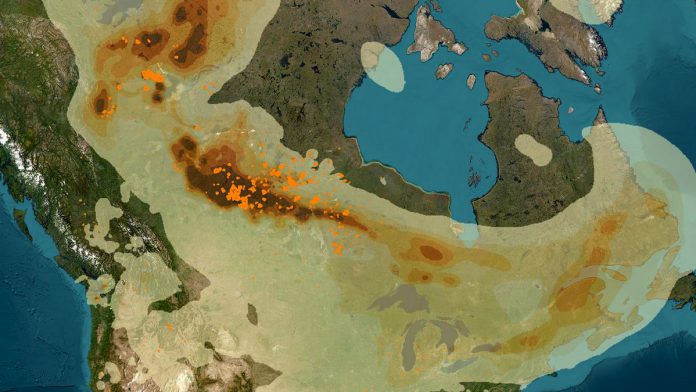
Poor air quality and reduced visibility in the Kawarthas caused by smoke from forest fires over the Prairies may persist into the Civic Holiday Monday (August 4).
On Saturday, Environment Canada issued a special air quality statement for the entire Kawarthas region that remains in effect on Sunday and may continue into Monday.
According to the Ontario Ministry of the Environment, Conservation and Parks, the Air Quality Health Index (AQHI) for central Ontario is forecast to be at 7, which is in the high-risk range.
The 10-point AQHI scale is low risk (1-3), moderate risk (4-6), high risk (7-10), and very high risk (over 10).
In the high-risk range, people should consider reducing or rescheduling strenuous activities outdoors, especially if they experience symptoms such as coughing and throat irritation. People with heart or breathing problems are at greater risk.
Air quality and visibility due to wildfire smoke can fluctuate over short distances and can vary considerably from hour to hour.

As smoke levels increase, health risks increase. Limit time outdoors. Consider reducing or rescheduling outdoor sports, activities and events.
You may experience mild and common symptoms such as eye, nose and throat irritation, headaches, or a mild cough. More serious but less common symptoms include wheezing, chest pains, or severe cough. If you think you are having a medical emergency, seek immediate medical assistance.
People more likely to be impacted by outdoor air pollution, including people aged 65 and older, pregnant people, infants and young children, people with an existing illness or chronic health condition, and people who work outdoors should reduce or reschedule strenuous activities outdoors and seek medical attention if experiencing symptoms.
When indoors, keep windows and doors closed as much as possible. When there is an extreme heat event occurring with poor air quality, prioritize keeping cool.
Protect your indoor air from wildfire smoke. Actions can include using a clean, good quality air filter in your ventilation system or a certified portable air cleaner that can filter fine particles.
If you must spend time outdoors, a well-constructed, well-fitting and properly worn respirator type mask (such as a NIOSH-certified N95 or equivalent respirator) can reduce your exposure to the fine particles in the smoke. Even though exposure may be reduced, there can still be risks to health.
Check in on others who are in your care or live nearby who may be more likely to be impacted by outdoor air pollution.


























